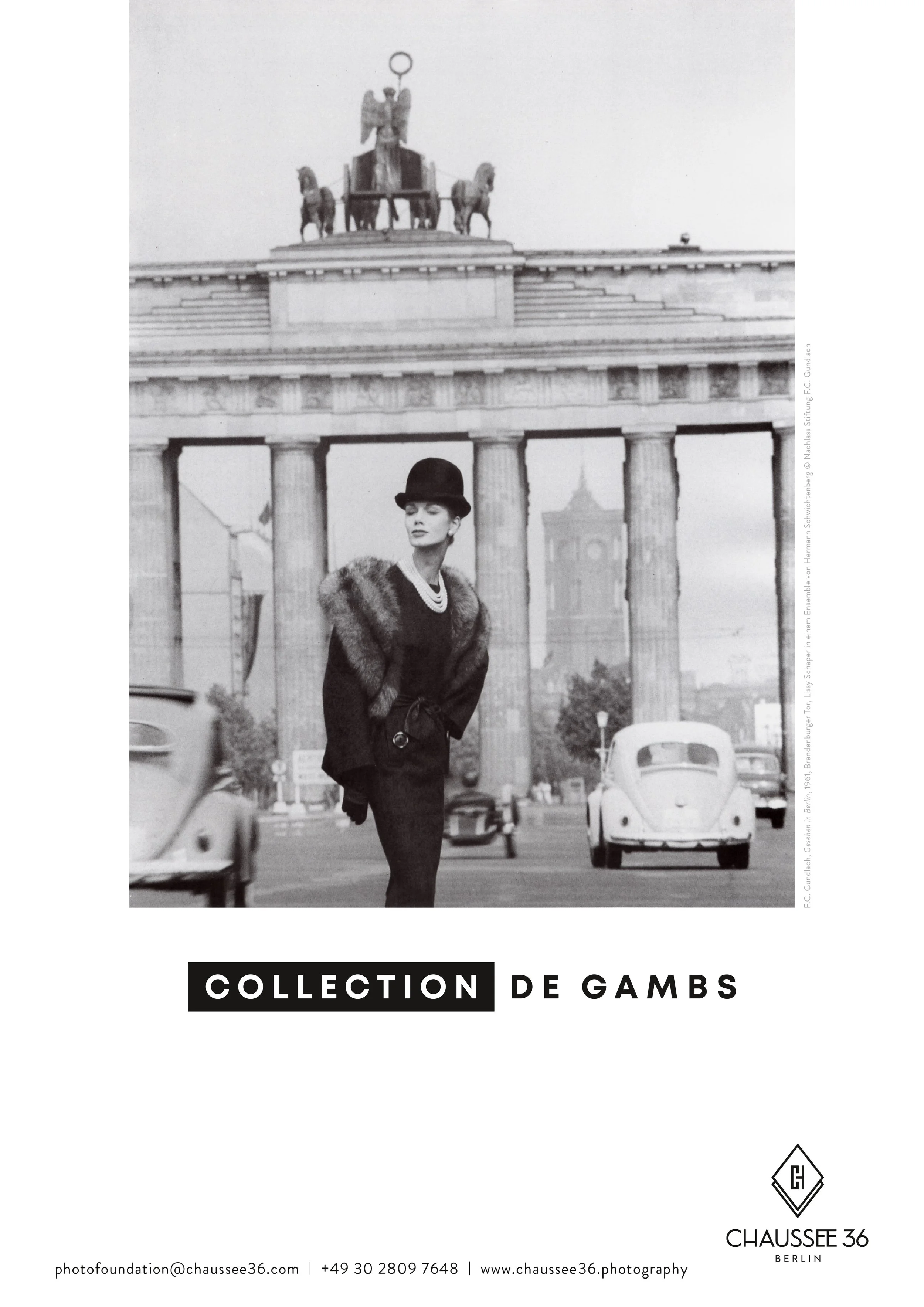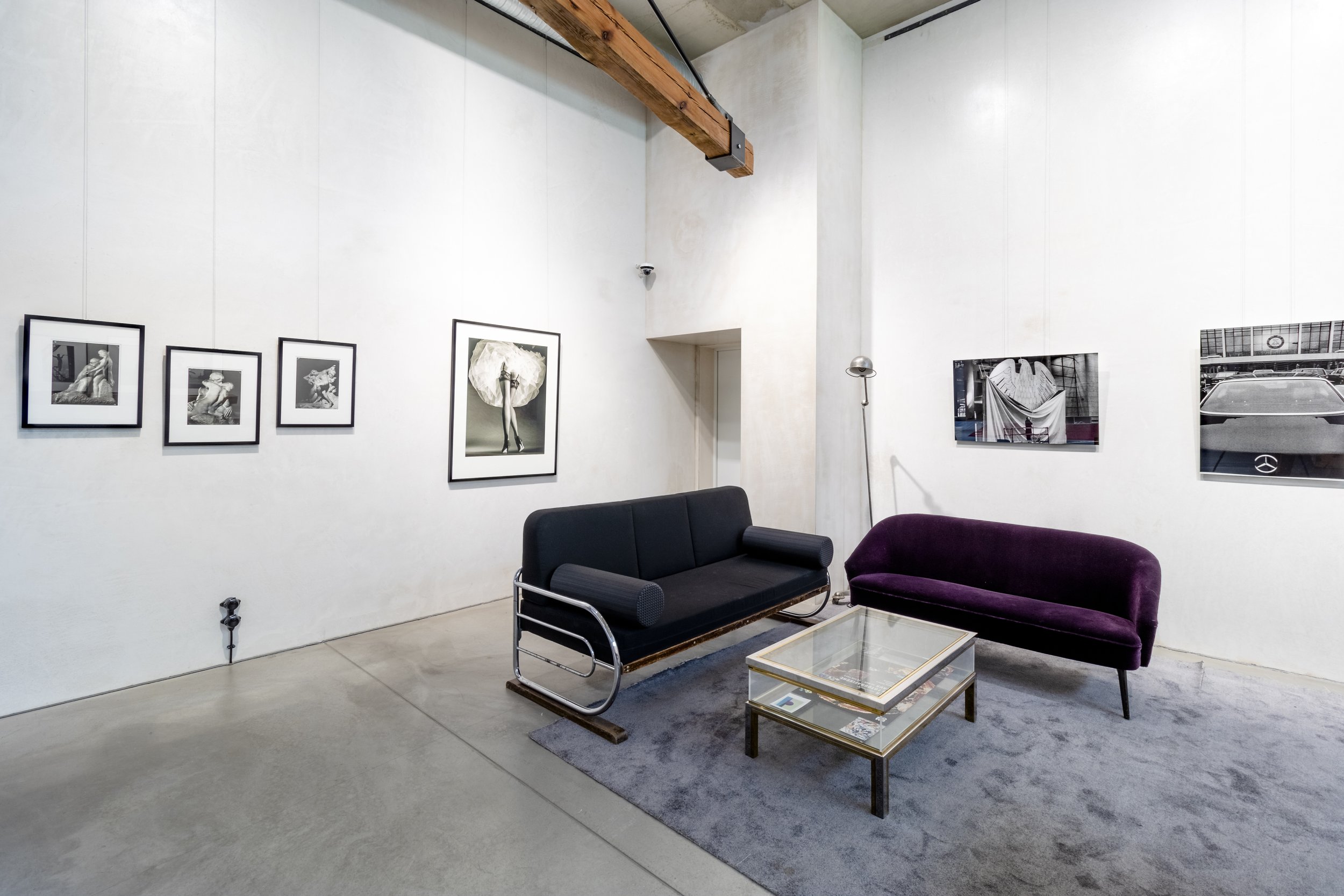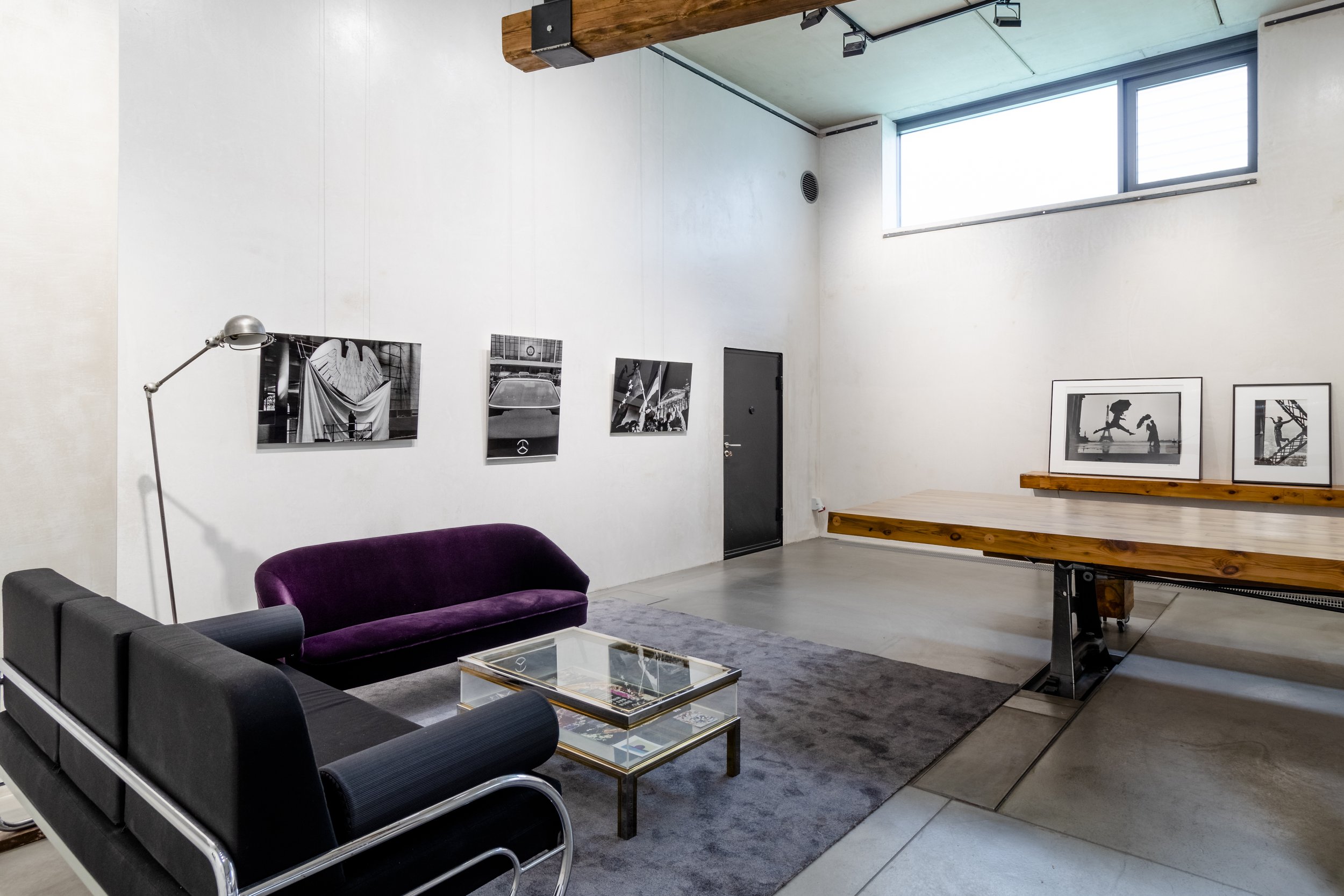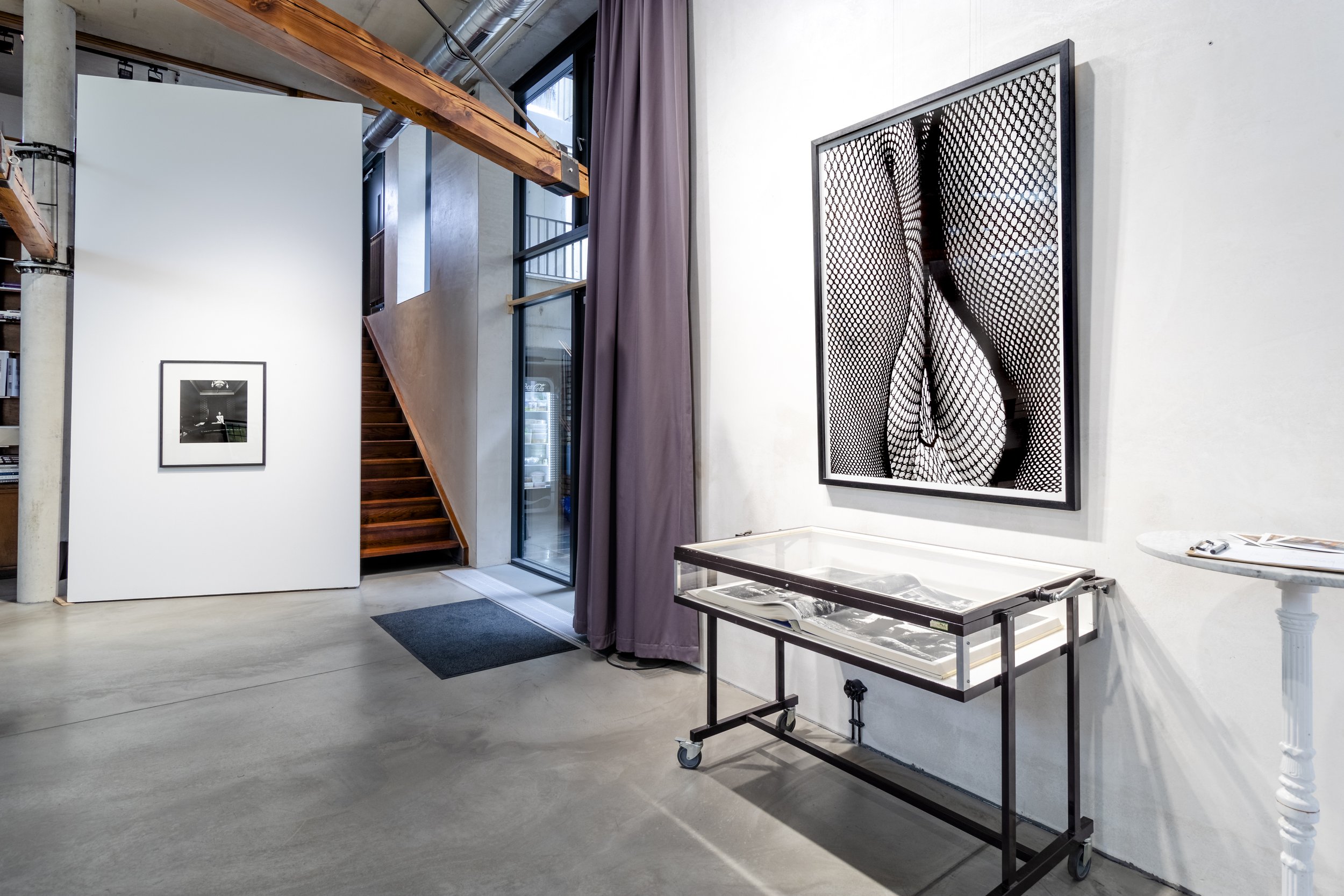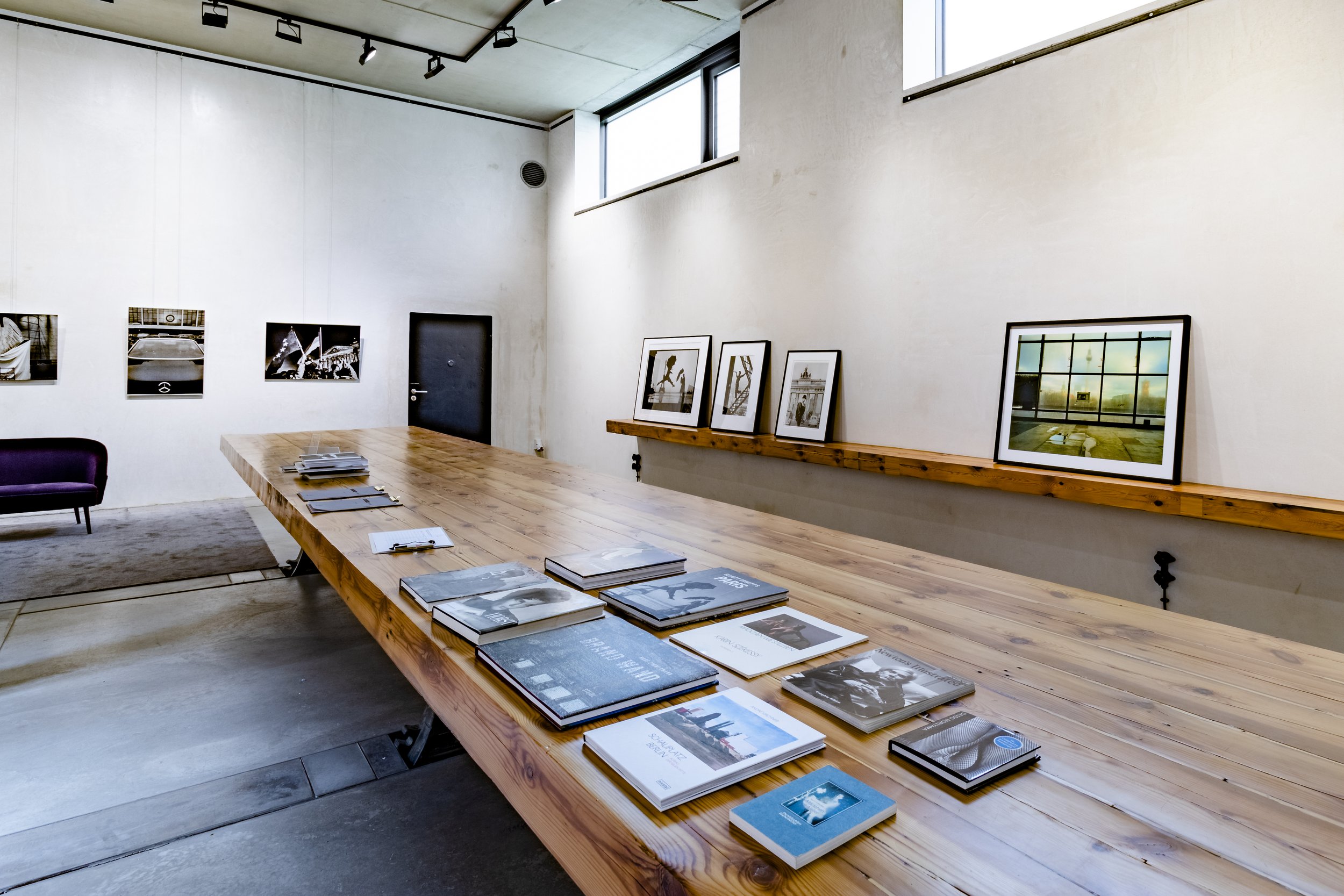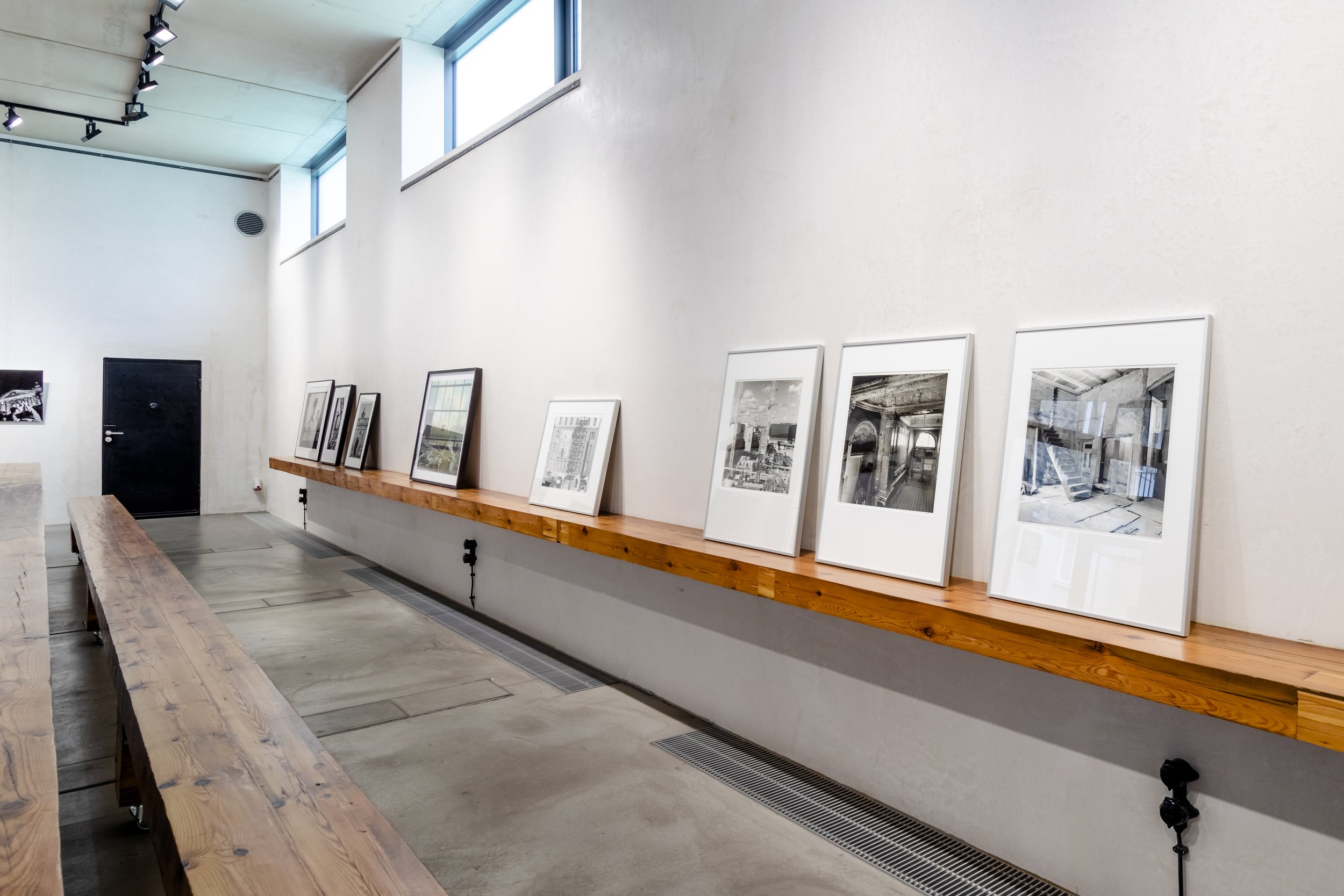Collection De Gambs: MONUMENTAL
14.06. – 07.07.23.
Visit by appointment only
Time slots between:
Tuesday – Friday 1-5 PM
Thank you to contact us previously under:
photofoundation@chaussee36.com
+49 30 28097647
EN - Real monuments and monumental images are featured in this new presentation from the Collection De Gambs, bringing together some iconic images from the history of photography.
Cherished by holidaymakers, historic monuments are a favorite photographic motif. In Berlin as in Paris, the masters of photojournalism and fashion photography have seized upon them to create original images. This was the case, for example, of F.C. Gundlach. In August 1961, a week before the Berlin Wall was built, the Hamburg photographer immortalized his model in fur and mother-of-pearl in front of the Brandenburg Gate. In the spring of 1953, the young Marc Riboud, who was visiting Paris at the time, discreetly approached a painter on the Eiffel Tower to take his portrait suspended in mid-air. This now world-famous shot earned him his first publication in "Life" magazine. More discreetly, we can make out another painter restoring the stucco ornements at the entrance to the 1886 original CHAUSSEE 36 building. The documentary images by Björn Albert and André Kirchner give us a glimpse of the scale of the work at CHAUSSEE 36, a former Prussian officers' house that has been restored over five years following sustainable principles. Monuments often bear witness to historical change. In the 1990s, Berlin photographer Regina Schmeken documented the first years of German reunification, immortalizing the political symbols of this new era such as the Reichstag.
Fishnet tights like an abstract canvas, stockings lit up like a portrait: with their radical large-format compositions, Daido Moriyama and Horst P.Horst have created unforgettable images, at the crossroads between provocation and the quest for aestheticism. On view for the first time, an original edition of Helmut Newton's book SUMO creates a parallel with these erotic images. Weighing in at 34 kg, this monument to photography reminds us of the importance of this protagonist of German fashion photography. To honor its great men and their works, the monument is often adorned with friezes and sculptures. In the 1920s, Albert Rudomine, then the official photographer of the Musée Auguste Rodin, photographed the renowned sculptor's masterpieces. Among them: Le Baiser and L´Eternel Printemps were included to decorate La Porte de l'Enfer, a monumental work commissioned by the French state for the future Musée des Arts Décoratifs in Paris. Sculpture is also an integral part of photographer Karin Székessy's work. Posing nude on a four-poster bed and staring at us, the marble-fleshed model takes on the allure of a queen.
Exhibiting Artists:
Björn Albert
Elliott Erwitt
F.C. Gundlach
André Kirchner
Daido Moriyama
Helmut Newton
Horst P.Horst
Marc Riboud
Albert Rudomine
Regina Schmeken
Karin Székessy
Harf Zimmermann
————————————————————————————————————————————————
DE - Echte Monumente und monumentale Bilder sind in dieser neuen Präsentation der Collection De Gambs zu sehen, die einige ikonische Bilder aus der Geschichte der Fotografie vereint.
Historische Denkmäler sind ein von Urlaubern geschätztes und beliebtes Fotomotiv. In Berlin wie in Paris haben sich die Meister des Fotojournalismus und der Modefotografie ihrer angenommen, um originelle Bilder zu schaffen. Dies war beispielsweise der Fall bei F.C. Gundlach. Im August 1961, eine Woche vor dem Bau der Berliner Mauer, verewigte der Hamburger Fotograf sein Modell in Pelz und Perlmutt vor dem Brandenburger Tor. Im Frühjahr 1953 trat der junge Marc Riboud, der sich zu dieser Zeit in Paris aufhielt, unauffällig an einen Maler auf dem Eiffelturm heran, um sein Porträt schwebend in der Luft aufzunehmen. Diese nun weltberühmte Aufnahme brachte ihm seine erste Veröffentlichung in der Zeitschrift "Life" ein. Nahezu unbemerkt vom Betrachter bleibt ein anderer Maler, welcher die Stuckverzierungen am Eingang des Gebäudes CHAUSSEE 36 aus dem Jahre 1886 restauriert. Die dokumentarischen Bilder von Björn Albert und André Kirchner vermitteln einen Eindruck vom Ausmaß der Arbeiten an CHAUSSEE 36, einem ehemaligen preußischen Offiziershaus, das über fünf Jahre lang nach nachhaltigen Grundsätzen restauriert wurde. Denkmäler sind oftmals Zeugen des historischen Wandels. In den 1990er Jahren dokumentierte die Berliner Fotografin Regina Schmeken die ersten Jahre der deutschen Wiedervereinigung und verewigte die politischen Symbole dieser neuen Ära wie den Reichstag.
Netzstrumpfhosen wie eine abstrakte Leinwand, beleuchtete Strümpfe wie ein Porträt: Mit ihren radikalen großformatigen Kompositionen haben Daido Moriyama und Horst P. Horst unvergessliche Bilder geschaffen, die sich zwischen Provokation und dem Streben nach Ästhetik verorten. Eine Parallele zu diesen erotischen Bildern bildet die erstmals gezeigte Originalausgabe von Helmut Newtons Buch SUMO. Das 34 kg schwere Monument der Fotografie erinnert an die Bedeutung dieses Protagonisten der deutschen Modefotografie. Um die großen Persönlichkeiten und ihre Werke zu ehren, wird das Denkmal häufig mit Friesen und Skulpturen geschmückt. In den 1920er Jahren fotografierte Albert Rudomine, damals der offizielle Fotograf des Musée Auguste Rodin, die Meisterwerke des berühmten Bildhauers. Darunter: Le Baiser und L'Eternel Printemps schmücken La Porte de l'Enfer, ein monumentales Werk, das vom französischen Staat für das zukünftige Musée des Arts Décoratifs in Paris in Auftrag gegeben wurde. Die Skulptur ist auch ein wesentlicher Bestandteil der Arbeit der Fotografin Karin Székessy. Nackt auf einem Himmelbett sitzend, starrt uns das wie aus Marmor geformte Modell mit dem Charme einer Königin an.
Ausgestellte Künstler*innen:
Björn Albert
Elliott Erwitt
F.C. Gundlach
André Kirchner
Daido Moriyama
Helmut Newton
Horst P.Horst
Marc Riboud
Albert Rudomine
Regina Schmeken
Karin Székessy
Harf Zimmermann
Installation views MONUMENTAL. Photographs © Max Kuta & CHAUSSEE 36.


